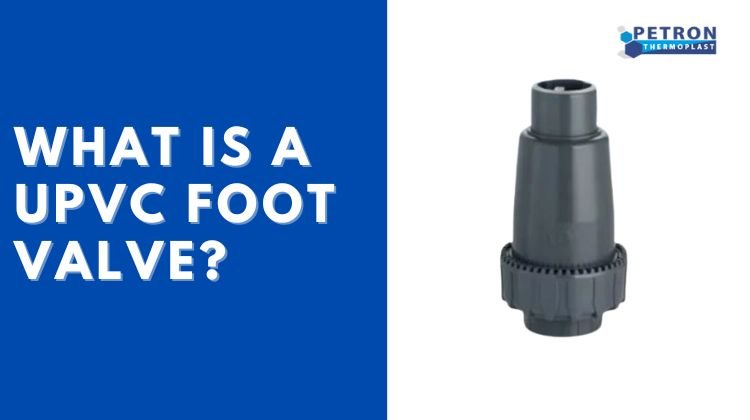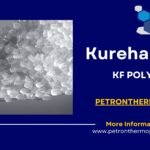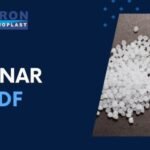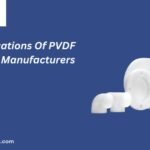A UPVC foot valve is a vital component in fluid handling systems, especially when it comes to controlling the flow of liquids. It is designed to allow fluids to flow in one direction while preventing backflow or reverse flow, ensuring optimal efficiency and functionality of the system. In this comprehensive guide, we will delve into the intricacies of UPVC foot valves, exploring their features, applications, advantages, and how they contribute to various industries.
Understanding the Basics
A UPVC foot valve is a type of check valve, commonly made from Unplasticized Polyvinyl Chloride (UPVC). It possesses exceptional strength, durability, and chemical resistance, making it an ideal choice for a wide range of applications. This type of valve typically consists of three main parts:
- Body: The main casing of the foot valve, usually made of UPVC material. The body houses the internal components and connects to the pipeline.
- Strainer: Positioned at the inlet of the valve, the strainer is a mesh-like component that prevents large particles and debris from entering the system. It ensures smooth operation by protecting the valve from potential clogs.
- Foot or “Flapper” Valve: The essential element responsible for controlling the fluid flow. It opens to allow liquid to pass through in one direction but closes tightly to prevent backflow.
The design and construction of UPVC foot valves are crucial in maintaining efficient flow control, preventing damage, and extending the life of the overall fluid handling system.
Key Features and Components
To grasp the significance of UPVC foot valves in fluid handling systems, it is essential to explore their key features and components in detail. Let’s examine each element individually:
1. UPVC Material
UPVC is a popular choice for foot valves due to its unique properties. Being unplasticized, it offers higher rigidity and resistance to chemical corrosion compared to regular PVC. This ensures that the valve can withstand a variety of harsh operating conditions, including exposure to corrosive substances.
2. Strainer
The strainer is a vital component of the foot valve, responsible for filtering out large particles, debris, and contaminants from the fluid. By preventing these unwanted substances from entering the valve, the strainer helps maintain the smooth operation of the system, reducing the risk of blockages and damages.
3. Flapper Valve
The foot valve’s flapper is a crucial part that determines the functionality of the valve. It operates like a one-way door, opening only when the fluid flows in the desired direction and shutting tightly when there is a possibility of backflow. This ensures the prevention of reverse flow, which could lead to inefficiencies and potential damage to the equipment.
4. Reinforced Design
UPVC foot valves are often built with a reinforced structure, providing added strength and durability. The robust construction ensures that the valve can withstand high pressure and flow rates without succumbing to mechanical stress.
5. Corrosion Resistance
The UPVC material’s inherent resistance to corrosive substances makes the foot valve suitable for various industries where the fluid being handled might contain acids, alkalis, or other corrosive agents.
6. Easy Installation
UPVC foot valves are designed for ease of installation, making them a practical choice for various applications. They can be integrated into existing pipelines or incorporated into new fluid handling systems with minimal effort.
7. Low Maintenance
The simple design and high-quality materials of UPVC foot valves contribute to their low maintenance requirements. Regular inspections and routine cleaning are typically sufficient to keep the valve functioning optimally.
Applications of UPVC Foot Valves
The versatility and reliability of UPVC foot valves make them a preferred choice in numerous industries. Let’s explore some of the common applications where these valves play a pivotal role:
1. Water Supply Systems
In water supply systems, UPVC foot valves are used to ensure a consistent and uninterrupted flow of water. By preventing backflow, they help maintain the pressure and efficiency of the water distribution network.
2. Agriculture
Agricultural irrigation systems often rely on UPVC foot valves to control the flow of water from wells or other water sources to fields. These valves facilitate precise control over irrigation, conserving water and optimizing crop yield.
3. Chemical Processing
In chemical processing plants, where the handling of corrosive liquids is common, UPVC foot valves are invaluable due to their resistance to chemical corrosion. They help regulate the flow of chemicals and prevent damage to the equipment.
4. Swimming Pools
UPVC foot valves are utilized in swimming pool filtration systems, preventing water backflow and maintaining hygienic and clear water by filtering out impurities.
5. Marine Applications
Marine industries use UPVC foot valves in various applications, including ballast systems and bilge pumping. The valves ensure efficient fluid control, contributing to the smooth operation of vessels.
6. Industrial Processing
In industrial processing plants, UPVC foot valves find applications in diverse processes such as wastewater treatment, food and beverage production, and pharmaceutical manufacturing. Their ability to handle corrosive fluids and maintain one-way flow is essential in these settings.
7. Mining Operations
In mining, where abrasive and corrosive materials are often encountered, UPVC foot valves serve as reliable components for dewatering and other fluid control processes.
Advantages of UPVC Foot Valves
The adoption of UPVC foot valves provides several advantages to fluid handling systems and the industries they serve. Let’s explore some of the key benefits:
1. Durability
The robust construction of UPVC foot valves imparts exceptional durability, ensuring a long service life even in demanding environments.
2. Corrosion Resistance
The resistance to chemical corrosion makes UPVC foot valves ideal for handling corrosive fluids without the risk of material degradation.
3. Cost-Effectiveness
UPVC foot valves offer cost-effective solutions for fluid flow control, as they are relatively affordable and require minimal maintenance.
4. Easy Installation and Maintenance
The straightforward design and installation process of UPVC foot valves, coupled with their low maintenance requirements, make them convenient for users and reduce downtime.
5. Prevents Contamination
By preventing backflow, UPVC foot valves protect fluid handling systems from contamination and maintain the purity of the fluid being transported.
6. Improved Efficiency
With their ability to maintain a one-way flow, UPVC foot valves contribute to enhanced system efficiency, reducing energy consumption and optimizing overall performance.
Conclusion
In conclusion, a UPVC foot valve is an essential component in fluid handling systems, offering reliable one-way flow control and preventing backflow or reverse flow. Its versatility, durability, and resistance to chemical corrosion make it a preferred choice in various industries, including water supply, agriculture, chemical processing, swimming pools, marine applications, and mining operations. By providing effective fluid flow control, UPVC foot valves play a significant role in ensuring the efficiency and functionality of fluid handling systems across different sectors.
Remember to choose the appropriate UPVC foot valve based on your specific application needs, and always follow proper installation and maintenance procedures to maximize its performance and longevity.
FAQ:
How does a UPVC Foot Valve work?
The UPVC foot valve operates like a one-way door or “flapper.” When fluid flows in the desired direction, the flapper valve opens, allowing the liquid to pass through. However, when there is a possibility of reverse flow or backflow, the valve closes tightly to prevent it from occurring.
What are the main components of a UPVC Foot Valve?
Body: The main casing of the valve, usually made of UPVC material, which houses the internal components and connects to the pipeline.
Strainer: Positioned at the inlet of the valve, the strainer is a mesh-like component that filters out large particles and debris, preventing them from entering the system and causing blockages.
Flapper Valve: The essential element responsible for controlling fluid flow. It opens to allow liquid passage in one direction and closes tightly to prevent backflow.
How do I choose the right UPVC Foot Valve for my application?
Choosing the appropriate UPVC foot valve depends on various factors, including the fluid type, flow rate, pressure, and application requirements. It is essential to consider the system’s operating conditions and consult with experts or suppliers to ensure you select the right valve that meets your specific needs.
Can UPVC Foot Valves handle high-pressure applications?
Yes, UPVC foot valves are designed to handle a range of pressure conditions. However, it is essential to select a valve that is rated for the specific pressure range of your application to ensure its proper functioning and longevity.









